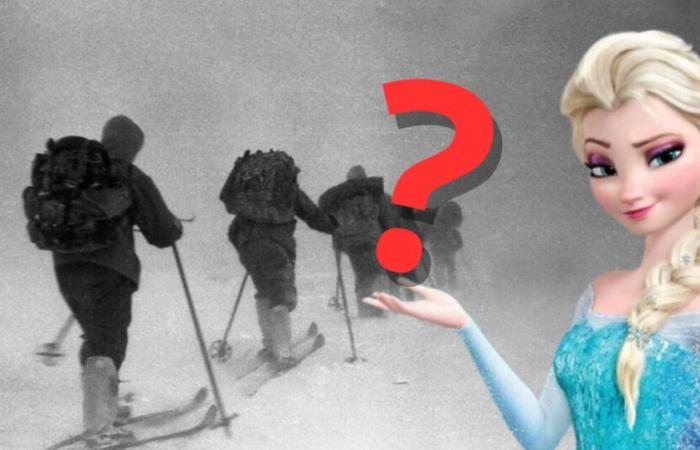In 1959, nine hikers died in unexplained conditions in Dyatlov Pass, Russia. More than six decades later, Swiss researchers, helped by the animation team of The Snow Queenshed new light on this drama. And no, it's not a joke…
For more than sixty years, the Dyatlov Pass affair plot. The bodies of the hikers, found in enigmatic conditions in the northern Russian Urals, and the vague conclusions of the Soviet investigation have fueled the wildest conspiracy theories. From the attack of a yeti to secret military tests, the mystery has continued to haunt people's minds. The Russian authorities have ropened the file in 2019but it is thanks to an unexpected collaboration between Swiss researchers and Disney animation techniques that new answers emerged. Rather unexpected indeed… The January 23, 1959ten members of the Ural Polytechnic Institute begin an expedition into the icy mountains of the Kholat Saykhl. Among them, Igor Dyatlov23, guides this group made up of eight students and a teacher.
Along the way, a hiker abandons the expedition for health reasons. The other nine continue and set up camp on February 1 on a slope deemed not very dangerous. A few weeks later, rescue teams discovered the group's tent, partially buried in snow and cut apart from the inside. Further away, the dead bodies of hikers are found scattered on the slope and belowsome in underwear despite temperatures of -20°C. Many have serious injuries: fractured ribs, broken skulls, empty eye sockets, and a missing tongue. The Soviet investigation concluded that “unknown natural force“, but without providing evidence cleargiving free rein to all speculation. Breathtaking, isn't it? And for now, the link with The Snow Queen seems “complicated” to establish. Wait.
A mystery “liberated” by Disney
In 2021, Johan Gaumedirector of Snow Avalanche Simulation Laboratory from EPFL in Switzerland, joins forces with Alexander Puzrin, geotechnical engineer at ETH Zürich. Fascinated by the realism of snow movements in The Snow QueenGaume contacted Disney animators to adapt their simulation code to his research. The objective: model the effects of an avalanche on human bodies. Their study, published in Communications Earth & Environment and reported by National Geographichighlights a rare phenomenon: a delayed avalanche. The hikers, by clearing the snow to set up their camp, would have destabilized the slope. Of the katabatic winds (extremely intense and persistent surface winds) would have accumulated new masses of snow over the hours, causing an avalanche small in size. This flow, although discreet, would have been enough to bury the tent and cause serious injury.
Crash-tests macabres
Swiss scientists also looked at the injuries of the victims, judged “atypical” for an avalanche. With a cut tongue, to say the least… For this, they relied on data from crash tests made by General Motors in the 1970s. These experiments, where human corpses were subjected to pressure to test the safety of the beltsprovided valuable references. According to their simulations, a block of snow of around five meters, equivalent to the size of an SUV, could cause serious fractures by hitting bodies lying on skis, without causing immediate death. “Some blocks of snow can be very hard; it is entirely plausible that they could inflict blunt force trauma.”explains Freddie Wilkinson, mountaineer and professional guide, quoted by National Geographic.
Case closed?
Yes, the researchers' study provides an explanation plausiblebut several mysteries remain. Traces of radioactivity on hikers' clothing could come from lanterns containing thorium. THE “paradoxical undressing”a symptom of hypothermia, would explain the absence of clothing in some victims. As for the mutilations, they are perhaps the work of scavengers. Alexander Puzrin, in the columns of National Geographicinsists that the hikers were competent and experienced. “They could never have imagined that clearing snow to set up their tent on what appeared to be a gently sloping slope would present a danger.”he says. Johan Gaume admits that the idea of an avalanche seems “too banal” for many. “They don't want it to be an avalanche. It's too normal.” Bloody stories please and inspire. It is not the success of the multiple series glorifying the cruelest serial killers that will prove the opposite…
Sources :
You may also be interested in:
Bridgerton: these five things to know about the real Queen Charlotte
The Lion King, a success that Disney did not believe in!
The Disney+ series “Shogun”: a fascinating dive into the war of the Japanese overlords
The funny story of this American couple who lived for 15 years… in Disneyland!
Walt Disney Company: how Mickey changed the destiny of the company!






